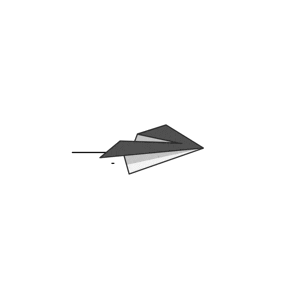Specifications for Australian visa photo size
By support@click2visas.com
4 years
Introduction:
The photos are among the essential criteria for completing your application when you apply for visas to Australia.
No matter which type of visa you apply for and the other documents, you will always be required to submit photos with Australian visa photo size and quality regulations. There would need to be a picture of any child getting a passport or visa. Shots in groups are not appropriate.
Every boy, including infants, must be documented separately. Kids are more challenging and take a little longer to take the right images based on Australian visa photo size requirements. The Australian government acknowledges and allows for looser child regulations. We give essential details about Australian visa photo size and quality below.

Photo and Visa Application Criteria for Australia Passport, Rules, Guidelines and specifications:
- Australian visa photo size must be wide from 35 mm to 40 mm.
- The height of the Australian visa photo size must be from 45 mm to 50 mm.
- Up to a limit of 36 mm, with a minimum of 32 mm, maybe the Australian visa photo size of the face from chin to crown.
- Two similar, good quality color prints made by dye sublimation, less than six months old, not from an inkjet printer
- Photo editing of any kind is not allowed
- A clear, concentrated picture with no ‘red eye’ or marks
- Pure white or light grey backdrop contrast to your face
- Standardized lighting with (no reflections or shadows), sufficient contrast, and brightness to reveal natural skin tone.
- Face focused and staring directly on at the camera; not bent in any direction
- Hair off your forehead to expose the edges of your face
- Eyes wide open, closed lips
- A Neutral Expression Only (not frowning, laughing, or smiling)
- If for religious purposes, you usually cover your head, and if you wear the cover when you cross international boundaries, then you could wear the cover in your passport photo.
- Religious head covers must be plain-colored, not patterned, and worn in a way that reveals the face to the top of the forehead from the tip of the chin. Your face’s edges on each side also have to be visible.
- Any part of your face, particularly the area all over your eyes, mouth, and nose, can’t be obscured by jewelry. Rings or studs may not represent any reflection.
- On the lenses, shine. Maybe your head has been angled in such a way that the ceiling light is mirrored on your lens.
- Anyway, any glare, whatever you should never be seen in the photo. On the lookout, be on. Retake the image if this happens, as ANY picture changes are never permitted.
- No matter where you’re from, sunglasses or tinted transition lenses are not authorized. Getting your eyes fully visible is the essence of every passport picture. Sunglasses defeat that aim.
- Place If it is up to you to wear passport picture glasses on or off, but if you wear them and follow the above rules, ensure your glasses it’s not at the base of your nose. Glasses should be worn and placed at the top so that eyes can be seen easily too.
- The frames can’t block your eyes if you already have
to wear glasses for medicinal purposes, and there can’t be any glare from the
lenses. You have to provide us with a medical certificate.
- Tell them why you can’t take your glasses.
- Has a signature of a licensed medical practitioner
- It contains the full name of the medical practitioner, the registration number, and the medical profession’s phone number and address.
- As long as the face can be seen clearly, the hair may be down. Headpieces are not allowed, such as hats, beanies, or hair accessories. For religious reasons, headgear is ok when the face is not blocked.
- The camera that is used must be at least 1.2 meters away.
- For prints, good quality, and must use the glossy photographic paper.
- Use good lighting in your photo so that each component has the same amount of sunlight on the face.

Laws and requirements for Australian visa photo size for babies, infants, and newborns:
You may be curious if you, as parents, are the only ones required to have a passport.
Perhaps it’s surprising, but the answer is no. To leave the country, each baby, regardless of age, requires having their documentation. Yes, newborns, too.
You must have a valid passport, which requires a recent photo with Australian visa photo size and quality regulations if you are alive and conscious.
Most countries expect the infant’s eyes to be fully open and square your face with the camera. Although this is difficult and can take a few extra shots to accomplish, it is essential to accept applications.
It needs light to be even. There should not be any shadows over the face or background of children. The picture should reflect the proper tone and likeness of the skin. If you hold the baby, make sure your hands aren’t visible in the shot. It is recommended that an infant be put in a car seat or laid on the floor.
Before taking the picture, be sure to check the information of your home country.
In the picture, dolls, pacifiers, blankets, or bottles are not authorized. While these products can comfort an infant, they are not allowed in the picture.
Each infant or kid needs an individual picture with Australian visa photo size and quality specifications. Group pictures or family shots are not accepted.
Shoulders have to be in sight. Generally, even if minor variations by location, the head should take up 70 percent of the total picture.
- Children under the age of three may open their mouths, but it is also vital to open their eyes.
- With them, nobody really can be in the picture.
- In the frame, toys, bottles, and other items are not permitted.
- It is important to square the face and the top of the shoulder with the frame. The child’s head is not tiltable.
- As described above, children over the age of 3 are supposed to be photographed.
- Australian visa photo size, color, contrast, and brightness, must conform with technical laws and regulations.
What are the Australia visas you can apply with Click2Visas?
ETA Visa, a document that ultimately allows travelers for a limited period of leisure and Business travel in Australia, however no business, commercial, or paid activity is permitted.




